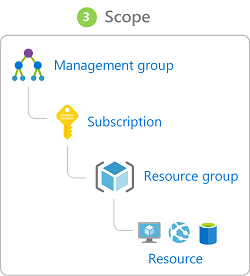Identity and Access (Azure AD)
If you are studying for Microsoft Azure Fundamentals Exam, this guide will help you with quick revision before the exam. it can use as study notes for your preparation.
Dashboard Other Certification NotesIdentity and Access (Azure AD)
- Old-school corporate security
- Network perimeters, firewalls, and physical access controls
- Does not work good with bring your own device (BYOD), mobile apps, and cloud applications.
- Identity = new primary security boundary
- Proper authentication and assignment of privileges is critical to maintaining control of your data.
- Allows to maintain a security perimeter outside physical control
- Possible to always be sure who has the ability to see & manipulate data and infrastructure with single sign-on and appropriate role-based access configuration.
Authentication and authorization
- Azure provides services to manage both through Azure Active Directory
Authentication
- 📝 Verification of a person or service looking to access a resource.
- Establishes if they are who they say they are.
- Challenges a party for legitimate credentials, and provides the basis for creating a security principal for identity and access control use.
- Sometimes called az AuthN.
Authorization
- 📝 Establishes what level of access an authenticated person or service has.
- Specifies what data they’re allowed to access and what they can do with it.
- Sometimes shortened to AuthZ.
Azure Active Directory
- Called also as Azure AD.
- Cloud-based identity service.
- Can synchronize with existing on-premises Active Directory or can be used stand-alone.
- Allows to share identities in cloud (e.g. Microsoft 365), mobile on-premises applications.
- ❗📝 No SLA for free tier, 99.9% for standard & premium
- Some services:
- Authentication.
- Self-service password reset
- Multi-factor authentication (MFA)
- Custom banned password list, and smart lockout services.
- Single-Sign-On (SSO)
- Application management. Manage cloud and on-premises apps using Azure AD Application Proxy, SSO, the My apps portal (also referred to as Access panel), and SaaS apps.
- Business to business (B2B) identity services: Manage guest users and external partners.
- Business-to-Customer (B2C) identity services: Customize and control how users sign up, sign in, and manage their profiles when using apps & services.
- Device Management
- Manage how your cloud or on-premises devices access your corporate data.
- Authentication.
Single sign-on
- More identities for single user
- = more passwords & harder for users to remember them
- = more risk of credential-related security incident
- = harder management: more account lockouts and password reset requests
- if a user leaves an organization = all identities must be tracked down
- Single sign-on (SSO) = single identity
- = one password to access across all applications
- 📝 less effort to manage e.g. if someone leaves an organization
- 📝 Allows you to use third-party e.g. on-prem identities in Azure.
SSO with Azure Active Directory
- Ability to combine data sources into an intelligent security graph.
- Graph enables the ability to
- provide threat analysis
- real-time identity protection
- Graph enables the ability to
- Applied to all accounts in Azure AD (can be synchronized from on-prem).
- Centralized identity provider is good
- centralized security controls, reporting, alerting, and administration of the identity infrastructure.
- E.g. allows signing into email and Office 365 documents without having to reauthenticate.
Multi-factor authentication
- Called also MFA
- Requires two or more elements for full authentication.
- Element categories:
- Something you know
- E.g. a password or the answer to a security question
- Something you possess
- E.g. a mobile app that receives a notification or a token-generating device
- Something you are
- E.g. a fingerprint or face scan used often on mobile devices.
- Something you know
- Element categories:
- 💡 Enable it wherever possible for more security.
Azure AD MFA
- Integrates also with other third-party MFA providers.
- 💡 Always use at least for Global Administrator role in Azure AD.
- 📝 You can activate conditionally using Azure AD Identity Protection
- E.g. any time a user is signing in from an unknown computer.
Providing identities to services
- Valuable for services to have identities
- Often, and against best practices, credential information is embedded in configuration files.
- With no security around these configuration files, anyone with access to the systems or repositories can access these credentials and risk exposure.
Service identities in Azure AD
Service principals
- Identity: A thing that can be authenticated.
- e.g. users with user name + password
- e.g. applications or other servers with secret keys or certificates.
- Principal: an identity acting with certain roles or claims
- You can have same identity but different role which you are executing.
- E.g. running
sudoon a Bash prompt or on Windows using “run as Administrator.”
- E.g. running
- Groups are often also considered principals because they can have rights assigned.
- You can have same identity but different role which you are executing.
- Service principal = an identity that is used by a service or application that can be assigned roles.
Managed identities
- Azure infrastructure automatically takes care of authenticating the service and managing the account.
- Can be instantly created for any Azure service that supports it
- Allows the authenticated service secure access of other Azure resources just like any AD account.
Roles in Azure
- All co-exists.
- Three categories: classic roles, azure roles, azure ad roles
Classic roles
- 📝 Before Role-based access control was introduced there were 3 roles:
- Account Administrator: ❗ One per Azure account
- Service Administrator:❗ One per Azure subscription
- Co-Administrator: ❗ 200 per subscription
Role-based access control
- Called also Azure roles.
- 📝 Provides fine-grained access management for Azure resources
- Role
- Sets of permissions
- E.g. “Read-only” or “Contributor”
- Identities are mapped to roles directly or through group membership.
- Role assignments
- When you are assigned to a role, RBAC allows you to perform specific actions, such as read, write, or delete.
- E.g.
- Allow one user to manage VMs in a subscription
- Allow an application to access all resources in a resource group.
- Can be granted at the service instance level, but they also flow down the Azure Resource Manager hierarchy.
- Roles assigned at a higher scope, like an entire subscription, are inherited by child scopes, like service instances.

- 💡 Segregate duties within your team and grant only the amount of access to users that they need to perform their jobs.
- Four fundamental Azure roles: Owner, Contributor, Reader, User Access Administrator
Azure AD Roles
- On-tenant level
- Global Administrator: Person who signs up for Azure AD tenant, can do anything.
- Also User Administrator, Billing Administrator
Privileged Identity Management
- Also known as Azure AD Privileged Identity Management (PIM)
- Includes ongoing auditing of role members
- needed as their organization changes and evolves.
- Provides:
- Oversight of role assignments
- Self-service
- Just-in-time role activation
- Azure AD and Azure resource access reviews.

